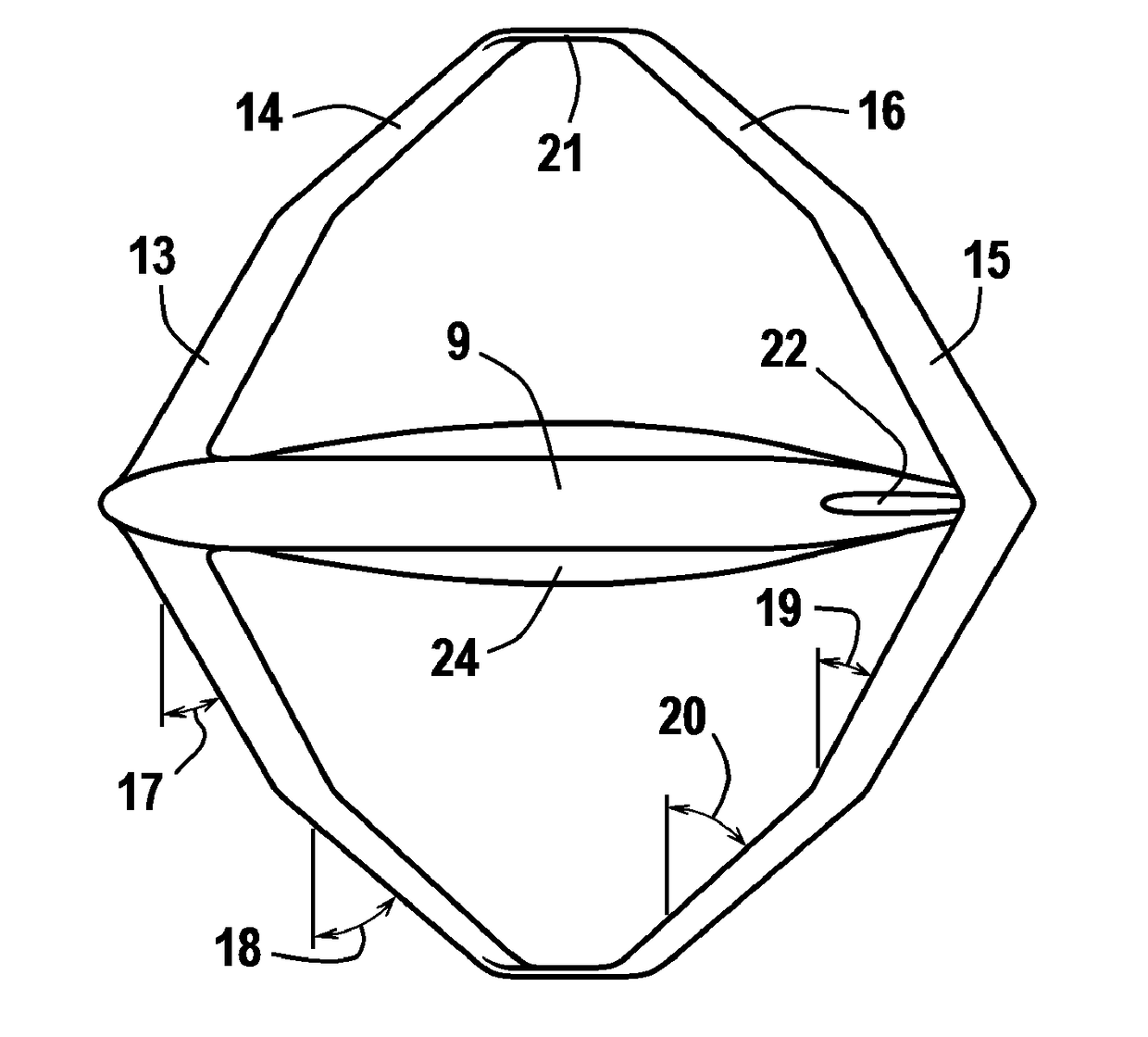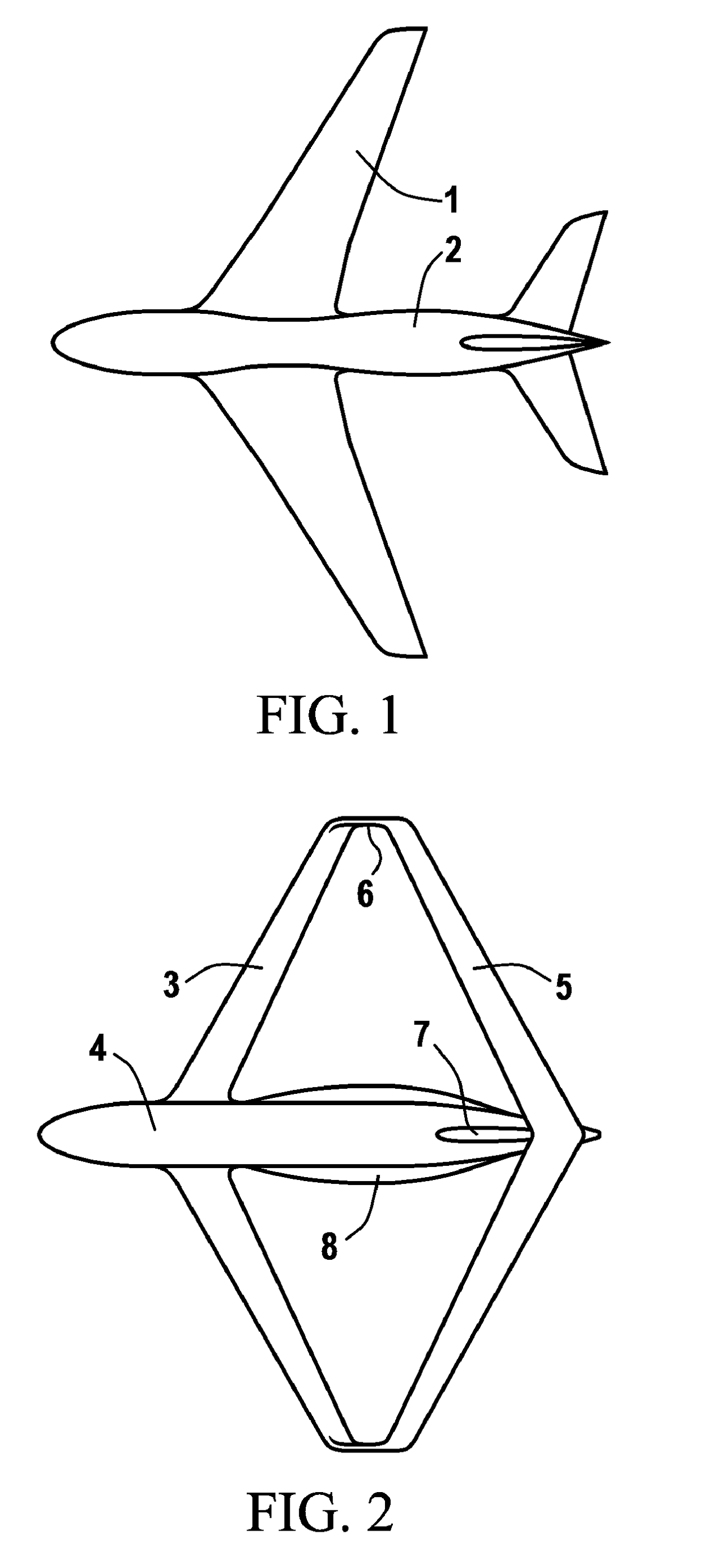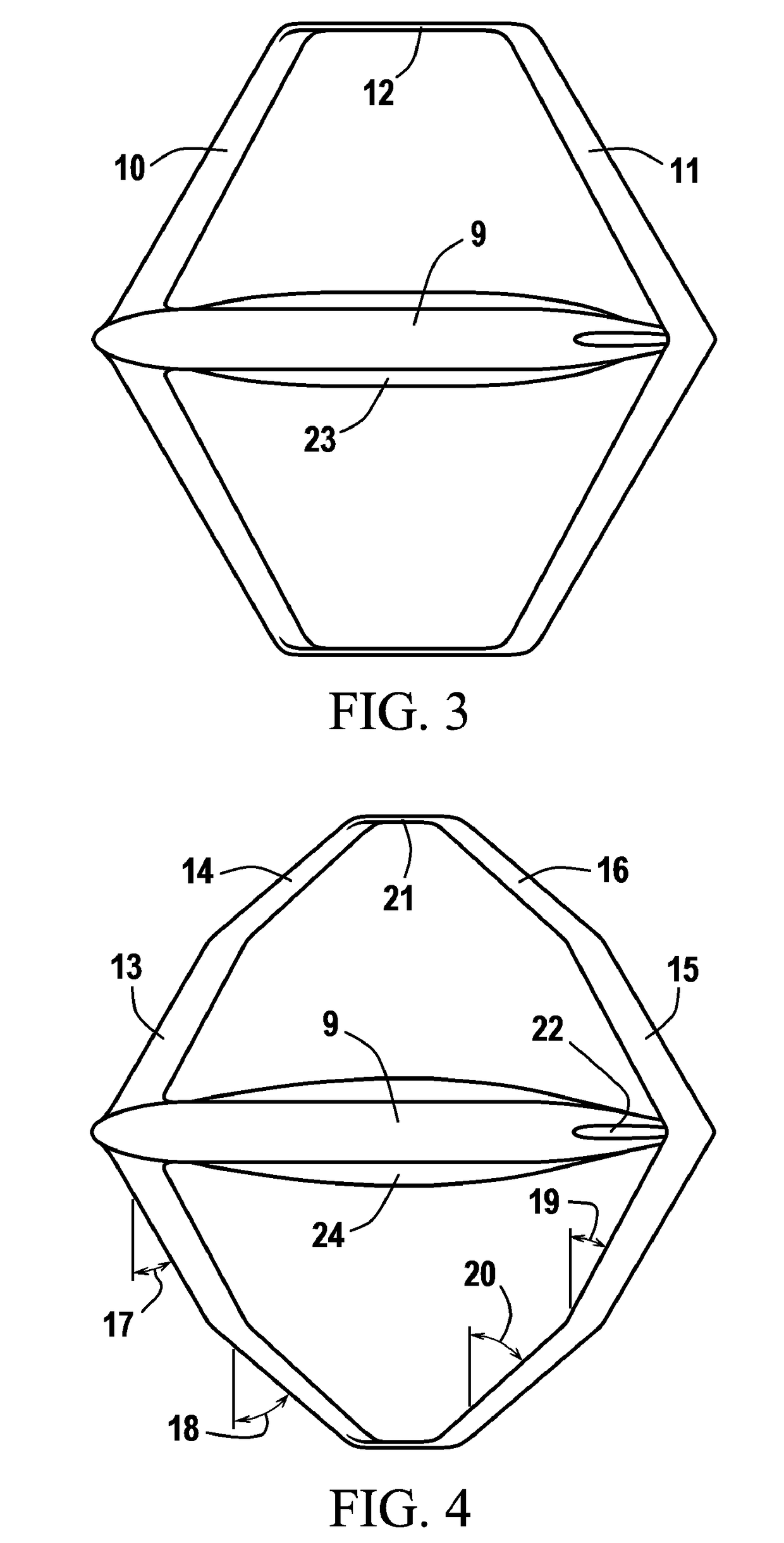Methods for improvements of the box wing aircraft concept and corresponding aircraft configuration
- Summary
- Abstract
- Description
- Claims
- Application Information
AI Technical Summary
Benefits of technology
Problems solved by technology
Method used
Image
Examples
Embodiment Construction
[0036]Referring now to the drawings, most of the embodiments show a large airliner or cargo plane. The present invention is in no way limited to this type of aircraft; it is applicable to any aircraft of any size, any purpose and application; manned or unmanned; and with any type of propulsion or combination of different propulsion systems for different flying conditions, without any limit as regards speed, altitude or function. The scope of the invention is not limited by materials. Any materials can be used allowing the construction and operation of the invention. Airfoils and other details of the embodiment and structure are established in a way that will be understood by those skilled in the art. Throughout the drawings, the symmetric aircraft parts, one positioned on one side of the fuselage and another on the opposite side, are provided with only one particular reference numeral when it is clear that the numbered item has an identical mirrored counterpart.
[0037]FIG. 1 is a top...
PUM
 Login to View More
Login to View More Abstract
Description
Claims
Application Information
 Login to View More
Login to View More - R&D
- Intellectual Property
- Life Sciences
- Materials
- Tech Scout
- Unparalleled Data Quality
- Higher Quality Content
- 60% Fewer Hallucinations
Browse by: Latest US Patents, China's latest patents, Technical Efficacy Thesaurus, Application Domain, Technology Topic, Popular Technical Reports.
© 2025 PatSnap. All rights reserved.Legal|Privacy policy|Modern Slavery Act Transparency Statement|Sitemap|About US| Contact US: help@patsnap.com



